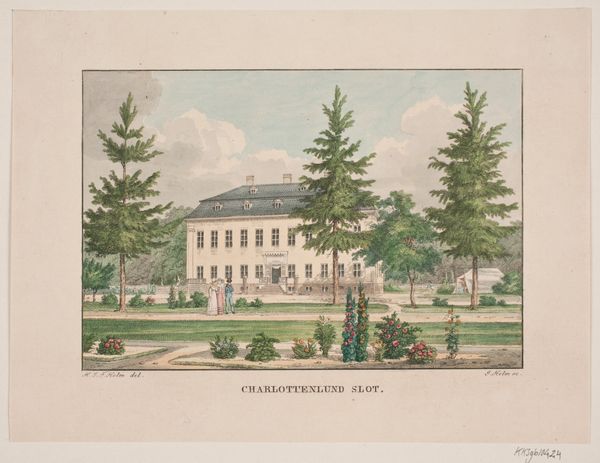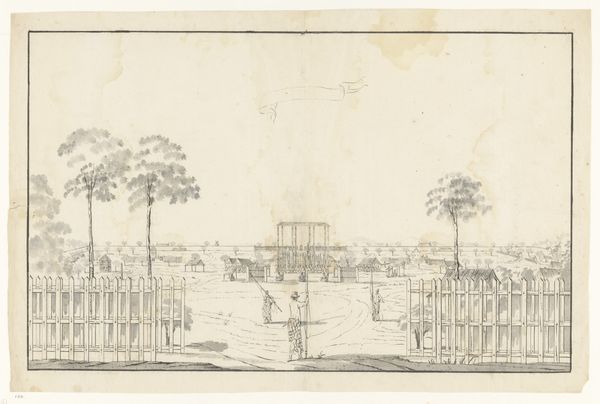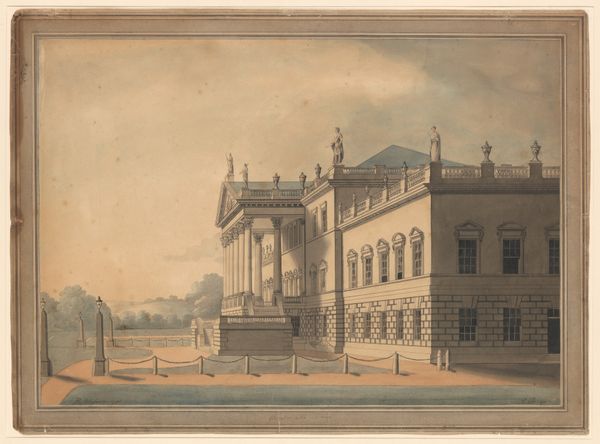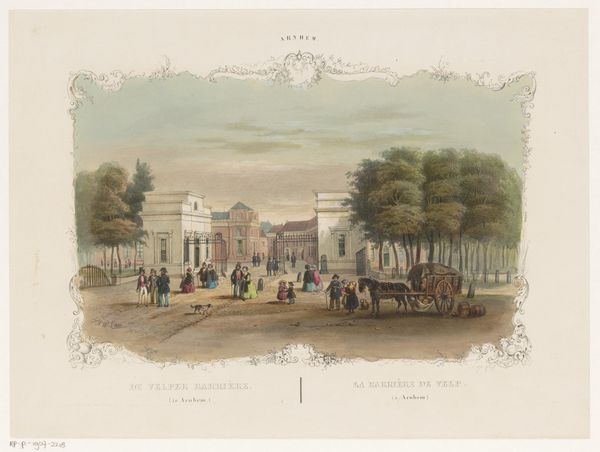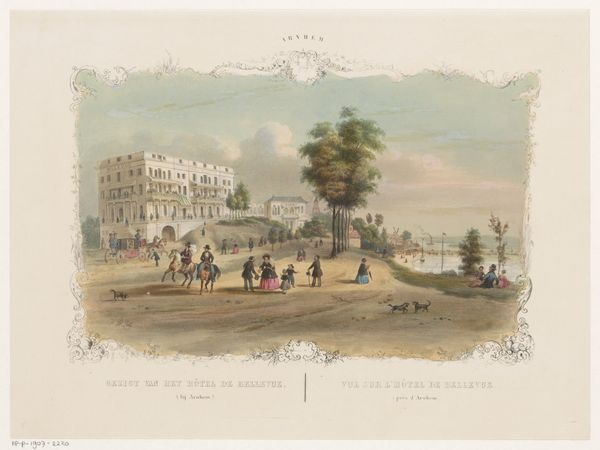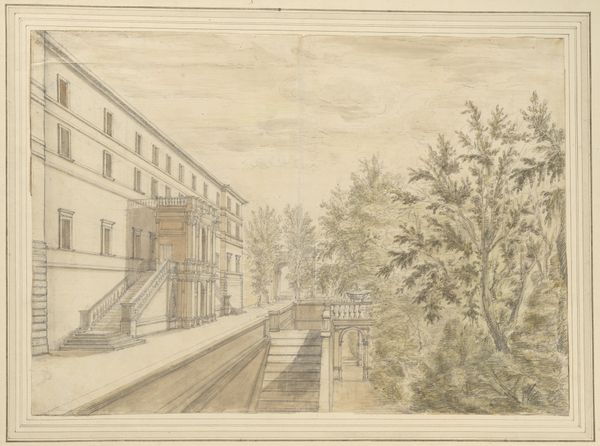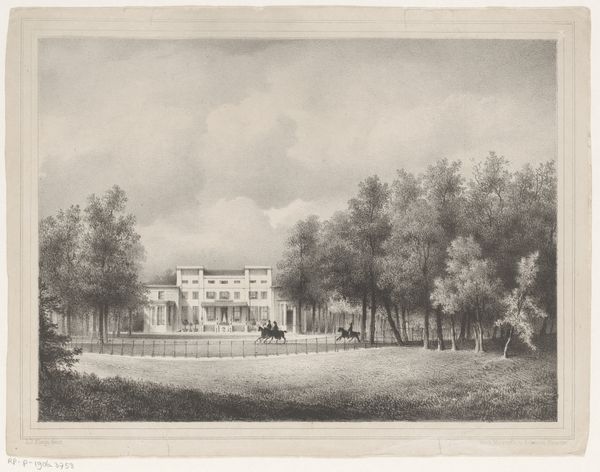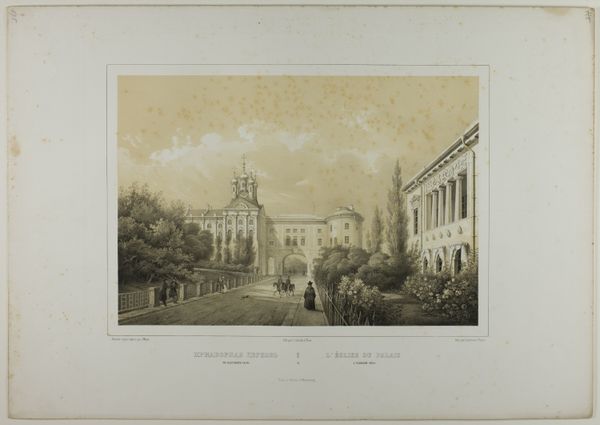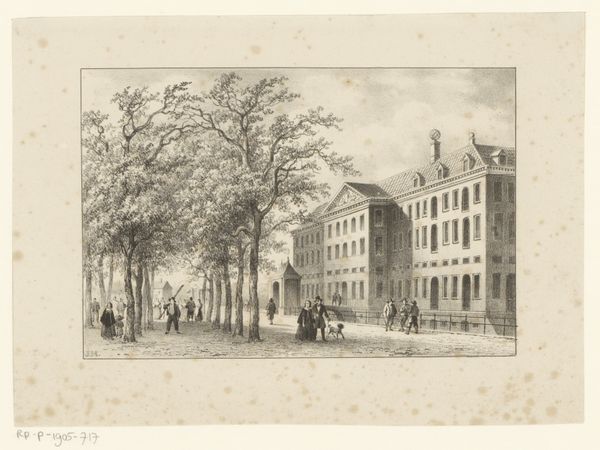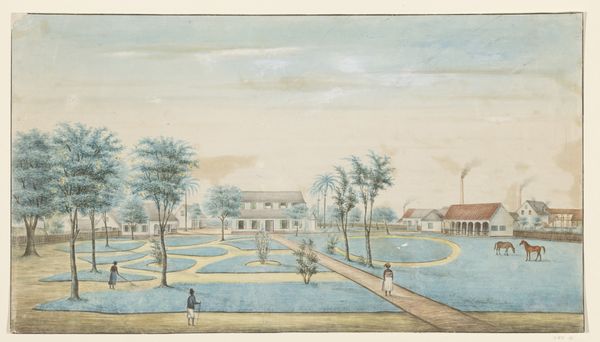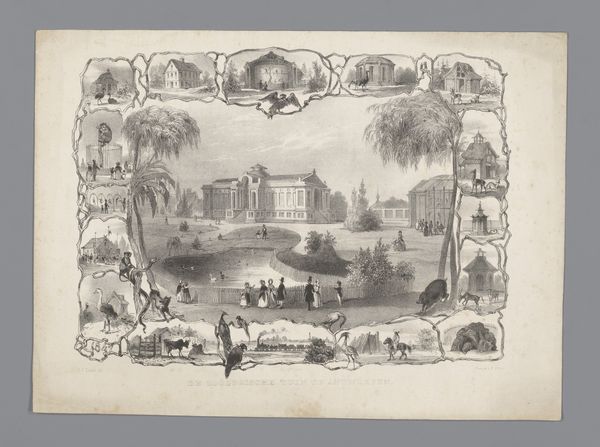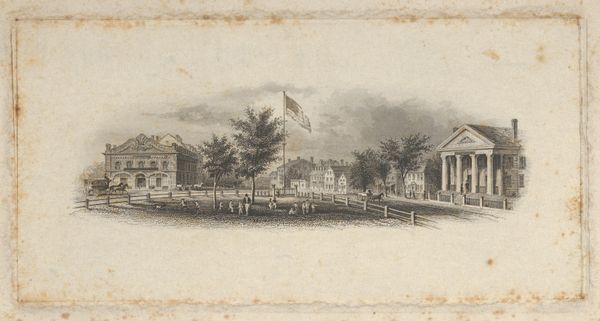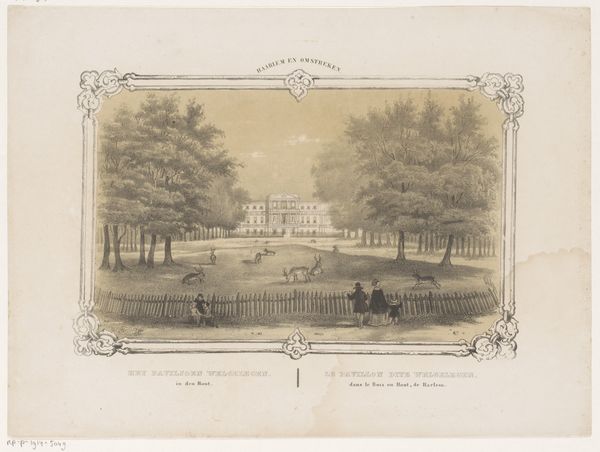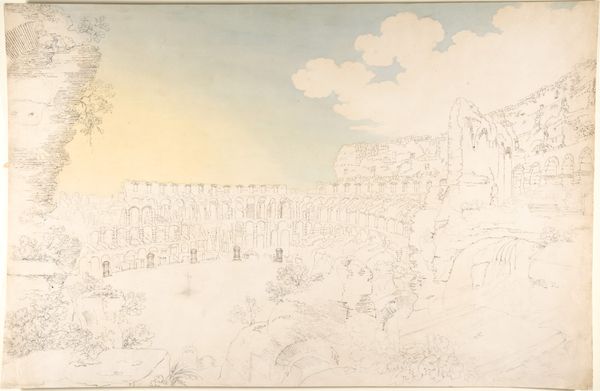
painting, plein-air, watercolor
#
painting
#
plein-air
#
landscape
#
watercolor
#
coloured pencil
#
romanticism
#
park
#
cityscape
#
building
Dimensions: 13 7/8 x 17 13/16 in. (35.2 x 45.2 cm)
Copyright: Public Domain
Editor: This watercolor and coloured pencil work is Sarah Fairchild's "Union Park, New York," created around 1845. It has a rather quaint, idyllic feel. What social narratives might we be missing? Curator: Indeed. The work presents a seemingly serene urban landscape. But it's crucial to remember that in 1845, New York City was undergoing dramatic social and economic transformations. Rapid urbanization and industrialization brought not only growth but also significant disparities. What isn't shown here is just as important as what is. Where are the factories? Where is the working class? Editor: So, you're saying the painting normalizes a specific, privileged perspective? Curator: Precisely. Union Park, then and now, was a space primarily for the affluent. The meticulously rendered buildings and leisurely figures reinforce a sense of order and prosperity, a stark contrast to the overcrowded and impoverished neighborhoods that existed nearby. Does the composition itself speak to this social segregation? Editor: The fence seems like a pretty literal barrier, doesn't it? Defining the boundaries of that cultivated space, separating the "haves" from the "have-nots." The fountain becomes a kind of…monument to that divide? Curator: The fountain, in its extravagance, absolutely symbolizes economic power. It is quite interesting that Fairchild included people standing in front of it to add to that idea. Moreover, landscape paintings from this era often functioned as tools for reinforcing dominant ideologies about progress, property, and social order. They contribute to a narrative of American exceptionalism that often glossed over injustices. Considering these factors, how does it shift your view? Editor: It makes me question that initial idyllic impression. Knowing the historical context, the painting feels less like a simple depiction of a park and more like a carefully constructed statement about social class and urban development. It certainly encourages us to investigate whose stories are privileged over others! Curator: Precisely. Art provides these subtle social messages. It's important to study and consider them.
Comments
No comments
Be the first to comment and join the conversation on the ultimate creative platform.

